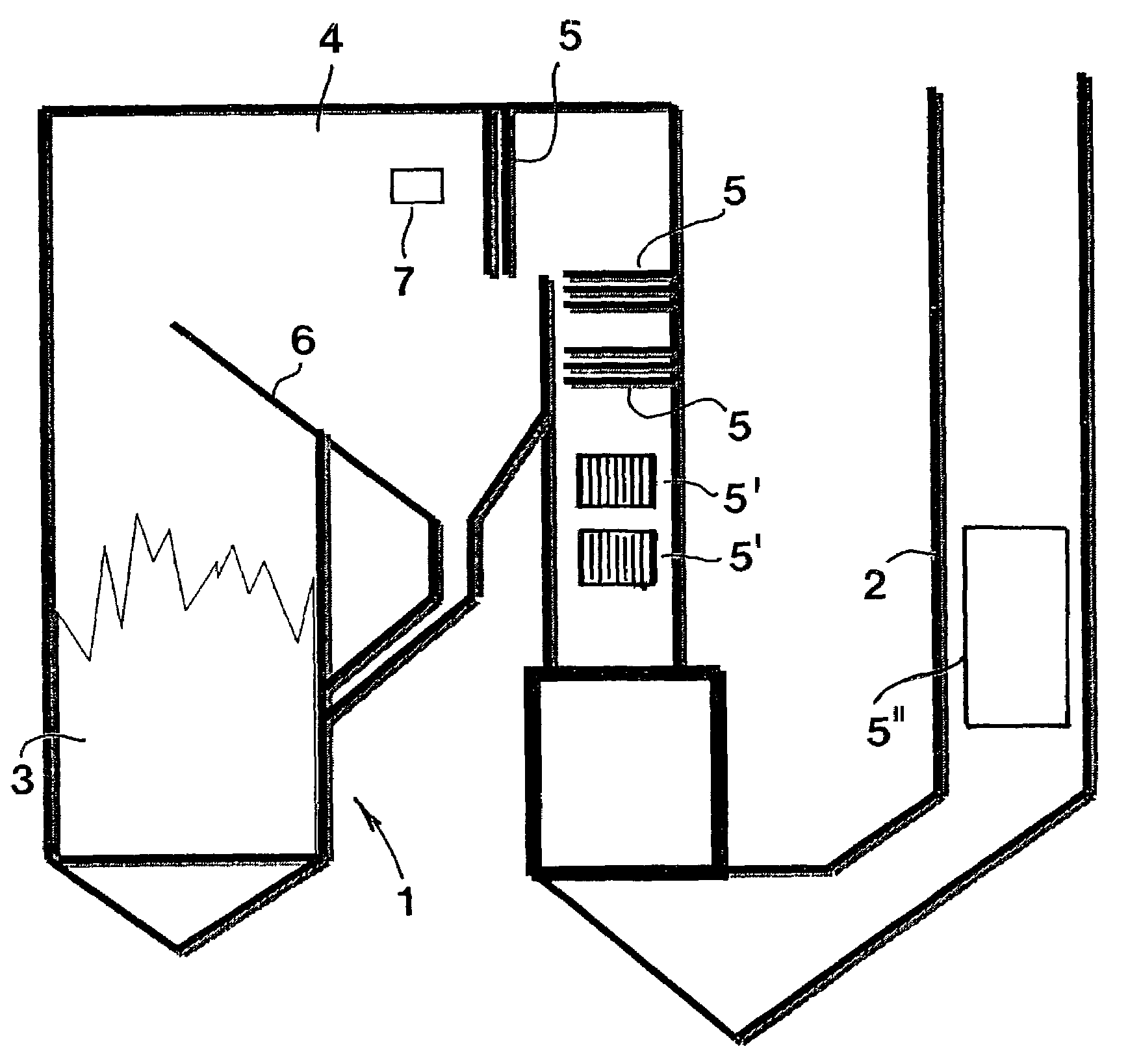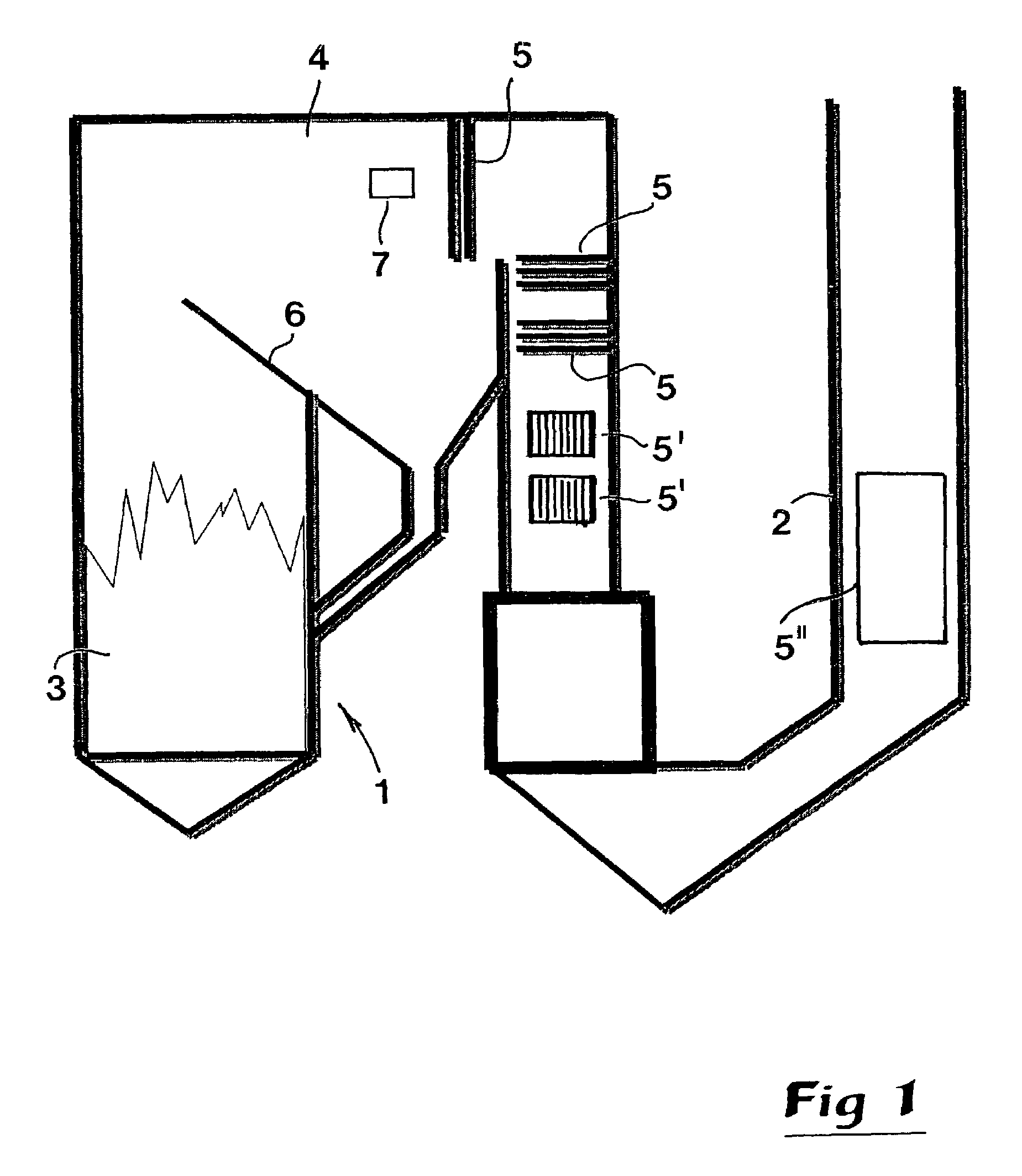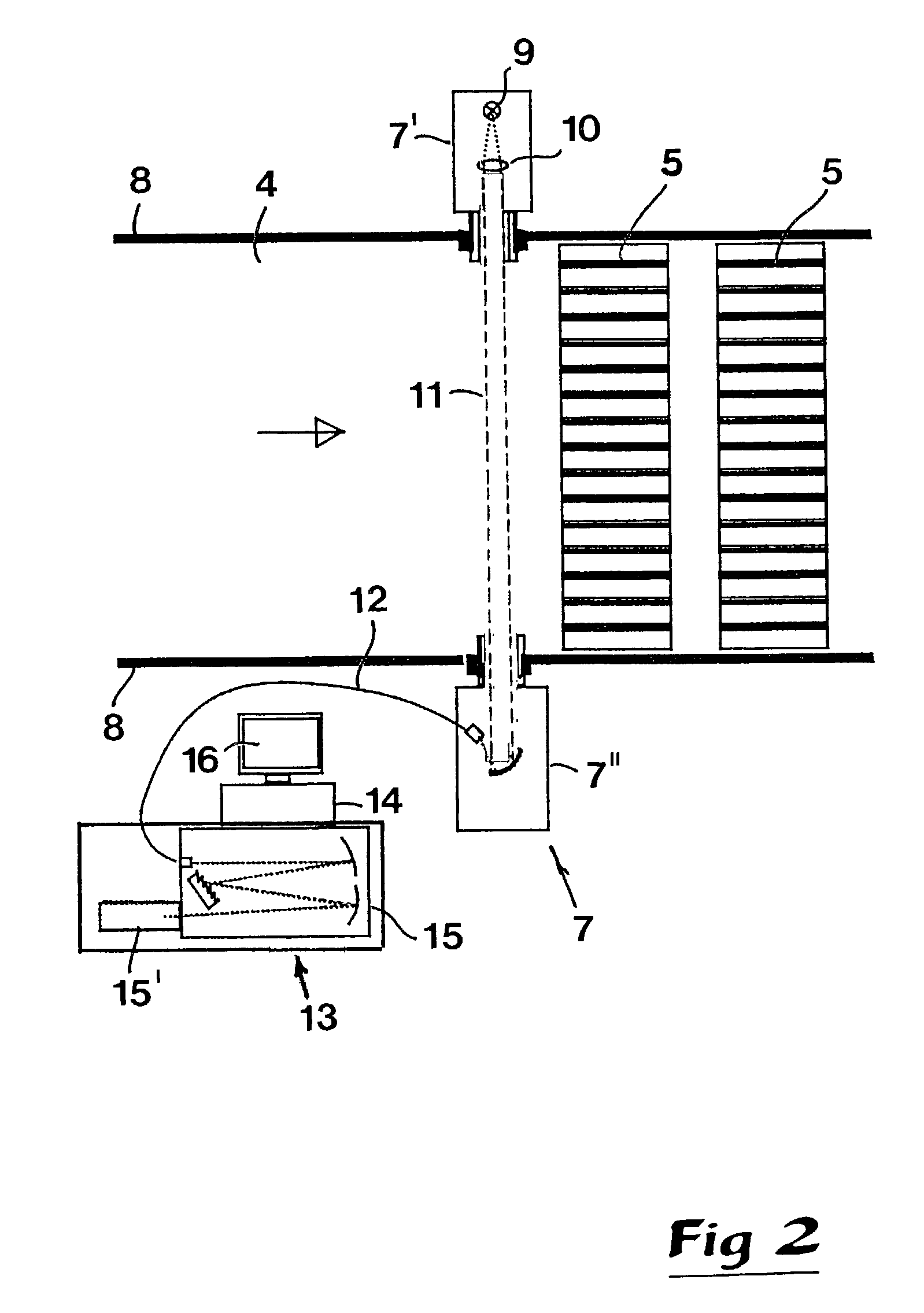Method and a device for measuring, by photo-spectrometry, the concentration of harmful gases in the fumes through a heat-producing plant
- Summary
- Abstract
- Description
- Claims
- Application Information
AI Technical Summary
Benefits of technology
Problems solved by technology
Method used
Image
Examples
Embodiment Construction
[0012]In FIG. 1 is shown a steam-producing combustion plant that may consist of an industrial steam boiler with the main purpose of producing steam, e.g., for the production of electricity, but that may also consist of a combined power and heating plant of the type that produces not only steam but also heat. As main components, the plant comprises a boiler 1 and a chimney 2. In the boiler 1 is included a first space 3 in the form of a combustion chamber, in which fed-in fuel is burnt. In practice, the boiler may work with conventional fluidized bed technique (among experts called BFB=“Bubbling Fluidized Bed”). In larger plants, the boiler may have a height within the range of 10 to 40 meters. In another space 4 serving as a flue gas duct, downstream of the combustion chamber 3, are provided one or several superheater devices. In the example according to FIG. 1, three such superheater devices 5 are shown. Each one of these devices comprises a set of tubes or tube loops, through which...
PUM
 Login to view more
Login to view more Abstract
Description
Claims
Application Information
 Login to view more
Login to view more - R&D Engineer
- R&D Manager
- IP Professional
- Industry Leading Data Capabilities
- Powerful AI technology
- Patent DNA Extraction
Browse by: Latest US Patents, China's latest patents, Technical Efficacy Thesaurus, Application Domain, Technology Topic.
© 2024 PatSnap. All rights reserved.Legal|Privacy policy|Modern Slavery Act Transparency Statement|Sitemap



